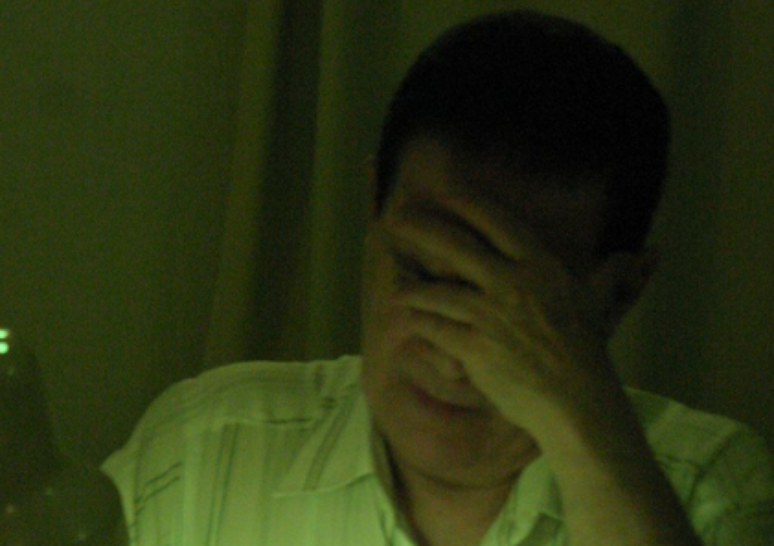The opening of courses has not been accompanied by a better distribution of residency and specialization vacancies or by the expansion of health services, which causes the migration of newly graduated doctors
The policy of Ministry of Education (MEC) the opening of new Medicine courses, especially in cities with a shortage of doctors, adopted since 2013 through the programmatic law More doctors and expected to resume this year, managed to increase vacancies in interior cities by 115%, but failed to keep these jobs in these locations after graduation.
The Medical Demography study, conducted by the Faculdade de Medicina da University of Sao Paulo (FMUSP) in collaboration with Brazilian Medical Association (AMB)shows that the percentage of new vacancies in the municipalities of the interior increased from 49% in the period 2002-2013 to 84% between the years 2013-2022. But even with a part of these classes of the last decade already graduated, the concentration of doctors in the large centers is still significant: there are 6.21 doctors for every thousand inhabitants in the provincial capitals and only 1.72 in the interior, a rate lower than that deemed satisfactory by World Health Organization (WHO)of 2.6.
«It was decided to open vacancies internally with the expectation that the internalisation of courses would ensure that, after graduation, professionals would remain and could also be activated in supply programs. Some of the classes are still in training, but many of the graduates are returning to the large centers”, says Mario Scheffer, professor at the USP and coordinator of the medical demography study.
Analysis done by Stadium based on the USP and MEC study databases, points out that one reason for continued inequality in medical distribution, even as vacancies increased within, was the insufficient number of medical residency places created in the period, especially in places with greater difficulty in providing professionals.
Brazil has 42,200 vacancies in medicine and only 24,500 vacancies in R1 type residence, i.e. for entry into the specialization. Of the total vacancies in medical schools, 57% are located in the South and Southeast. Among the residents, 71% are located in these two regions, which indicates a higher concentration.
According to experts and ex-students, the scenario means that a large part of graduates from smaller municipalities leave their jobs immediately after obtaining their diploma to seek specialization or job opportunities in the capital cities or larger municipalities.
data of Federal Council of Medicine (FCM) show that one in five graduates between 2018 and 2021 applied for their first professional membership with a regional board (CRM) in a state other than the one from which they graduated. In northern states, such as Acre, Tocantins and Rondônia, more than 50% of graduates have opted for primary registration in another Federation unit.
“There is a very important factor in retaining professionals, which is the search for specialization/residency, which is often not available in cities with fewer than 100,000 inhabitants where several courses have opened,” says Scheffer.
According to Mario Dal Poz, a professor of medicine at Rio State University (UERJ), international studies show that only 20 percent, on average, of doctors who graduated from colleges work in the place where they graduated. “That’s why some countries, like Australia and Canada, have policies that offer incentives for these professionals to stay in these places for a while and then migrate according to their interests,” he says.
Scheffer points out that, in addition to the search for specialization, other reasons that push professionals to migrate to larger cities are the offer of work in more complex units or the choice of more profitable specialties, as well as the living conditions in the place. “If the professional wants to pursue a career in the surgical specialty, for example, he will probably look for a larger city because he will not find residence in smaller ones,” he says.
Also remember that many are attracted to private sector jobs, which are more common in cities with larger populations. “All of this needs to be factored into a new policy for opening courses. This decision announced now to open courses in cities with a lower density of doctors was already announced ten years ago and needs to be improved,” he says.
For Julio Braga, coordinator of the medical teaching commission of the CFM, it is necessary to evaluate the local health structures before opening new faculties. “The increase in vacancies has not been accompanied by an increase in health services, hospitals, beds or resources that allow professionals to remain in the more remote regions. The lack of facilities and more specialized professionals in these localities may be teachers and tutors interfere with the quality of training,” he says.
The doctor had to leave a small town for an internship
The lack of more complex health services where to work and opportunities for specialization meant that Dr. Mirella Cristina Sakai, 27, left the city where she was studying medicine even before the official conclusion of the course.
Graduated in 2021 from one of the schools opened after the Mais Médicos Law, she was attending a course at an institute in Adamantina, a municipality of 35,000 inhabitants in the interior of São Paulo, but had to finish her degree in Araçatuba, a city in the region with 200,000 inhabitants where he stayed and now works in a health facility.
“The whole college class had to move to Araçatuba to do boarding school (type of compulsory internship in the last semesters of the course) because Adamantine did not have a medium and high complexity health unit that had all the specialties that we have to face in this period,” he says.
She says she stayed in Araçatuba after graduating and is now studying to try to get residency in even larger municipalities in the interior, such as Ribeirão Preto or São José do Rio Preto. “The specialty I want to pursue is anesthesia, and she doesn’t have a residency in either Adamantine or Araçatuba,” she says. Mirella says that, of the approximately 60 graduates, only two remained to work at Adamantine after finishing the course.
Dr. Isabel Amaral Narciso, 28, also managed to carry out a residency in family medicine in a city in the interior of Bahia, but, after specializing, she chose to return to the interior of Minas Gerais, where she was born and she has a family, because she managed to pass in a federal competition which gave her more stability.
“In the city where I resided, the employment relationship was precarious. In some villages, politicians interfere a lot in the work of doctors and there are many things wrong with the management. If you report him you are fired. I preferred to try Doctors for Brazil, which gave me financial stability and a career plan. I worked as a tutor in Diamantina, and I chose this city because it is medium sized, close to Montes Claros, where my family lives, and Belo Horizonte, a big city,” he says.
The federal government discusses the criteria for resuming the opening of courses
When asked whether the internalisation of courses has not led to a better distribution of doctors and what it intends to do to improve the policy, the federal government said that the actions do not have immediate effects and that the rules set out in the More Doctors Act do not it no longer applies in 2016. He also said that he works in an inter-ministerial commission to define the criteria that should be adopted for the opening of medical courses from now on.
The Ministry of Education said that “the opening of vacancies does not have an immediate effect in increasing the supply of doctors, as medical training is a long-term process”. He said that the first call for educational institutions that want to open courses according to the law was published in 2014 and that the courses in that call started in 2017, “which means that only in 2022 did the six years correspond to the average duration for the degree.”
The folder also stated that, with the publication of ordinance 650, in early April, the guidelines of the Mais Médicos law were re-established for the opening of new courses – suspended for five years during the moratorium on the opening of new vacancies.
He also informs that the criteria for the next public tenders are being drawn up by an interministerial commission for the management of health education and will be published by early August. According to the MEC, the indicators for assessing the quality of the courses are being examined by this commission together with Inep.
The Ministry of Health, in turn, specified that the Mais Médicos law presented a new format to authorize the opening of Medicine courses, “beginning to regulate initiatives to ensure the training of doctors in fields that until then had not they had this offer.”
According to the ministry, when the program was created, it was established that 11,000 vacancies would be opened in localities that did not have this graduation and with a network of services “capable of guaranteeing good training and in states with a quota of vacancy per inhabitant below the national average”.
According to the ministry, however, after 2016 “the regulatory format was no longer respected, which led to a large number of lawsuits for the opening of courses” which did not respect the format developed by Mais Médicos. “This reinforced the pattern of physician concentration found before the Program.”
The ministry states that, with the creation of the inter-ministerial commission, “it is open to dialogue and collaboration to formulate strategies that serve for a better distribution of vacant posts”.
Source: Terra
Ben Stock is a lifestyle journalist and author at Gossipify. He writes about topics such as health, wellness, travel, food and home decor. He provides practical advice and inspiration to improve well-being, keeps readers up to date with latest lifestyle news and trends, known for his engaging writing style, in-depth analysis and unique perspectives.








